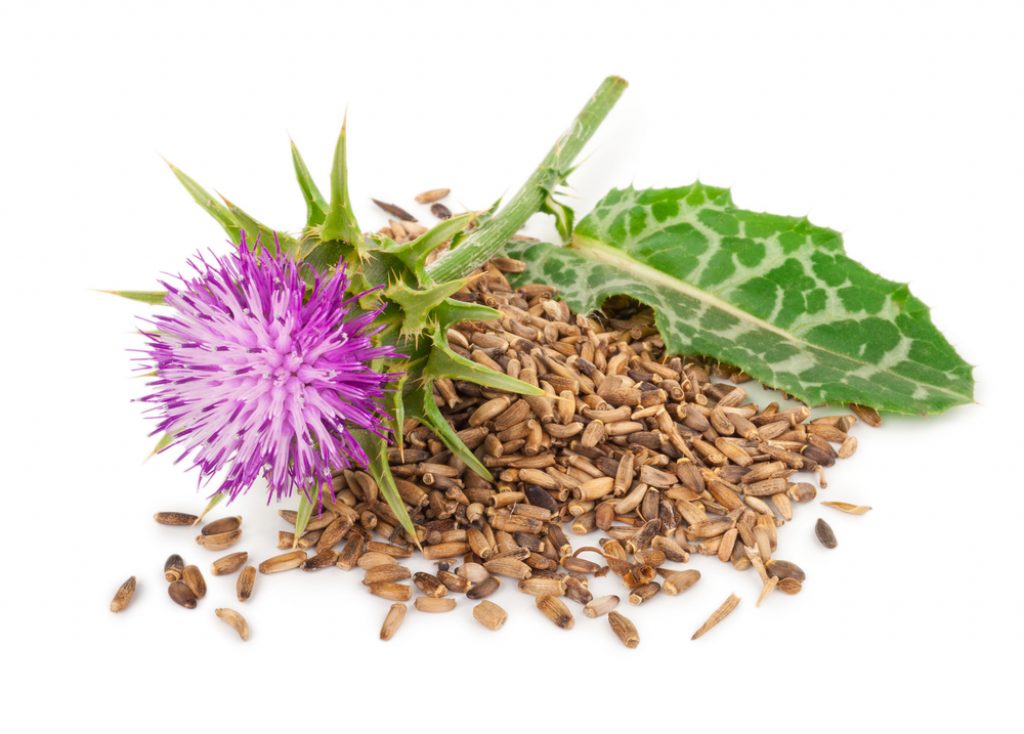

Milk thistle is an important medicinal herb, also known as blessed milkthistle, Marian thistle, Saint Mary’s thistle, etc. It’s a member of the Asteraceae family, an annual or biennial plant which can grow to be 250 cm tall, though its average height is 150 cm. The stem and leaves are hairy, and the upper part of the stem is split. The leaves are relatively large, stiff and light, and have edges. Ground leaves form rosettes. The thistle bursts into purple flowers. After it loses its blossoms, fruits are formed, i.e. hairy achenes. The plant can be found in many places. Its original home is the Canary Islands, the Mediterranean region, and Western Asia. From there, it spread into the whole world. It can grow in altitudes of up to 700 m above sea level. Frequently, milk thistle can be found in clayish soils or sandy loams as it requires soil rich in nutrients. Its wild version grows on rubble sites, in composts, etc. It’s been known for many centuries, and written records mentioned it as early as ancient Greece and Rome. It became widely used in the 16th century, mostly by healers and physicians who added it to brews, extracts and tinctures to treat issues of the abdominal cavity, i.e. stomach, gut, and liver problems. The fruits and seeds are used most predominantly; the leaves and root to a lesser degree.
Effects are strongly influenced by the composition of milk thistle’s fruits and seeds, the most frequently utilised parts. The most important substances are flavonoids and comprise the silymarin complex: silybin A, silybin B, isosilybin A, sosilybin B, silicristin, dehydrosilybin, apigenin, and silydianin. Individual flavonoids include: silandrin, silybinom, silyhermin, etc. The seeds also contain a large amount of lipids and unsaturated fatty acids, i.e. fatty acids most suitable for the human body: linoleic acid, oleic acid, palmitoleic acid, etc.
Essential oils are another important component. For example, the seeds contain gama-cadinene and alfa pinene. There are also terpenic compounds, e.g. limonene, terpinen-4-ol, beta-caryophyllene or alpha humulene. Amino acids, too, constitute an integral part of milk thistle (e.g. lysin, threonine, glycine, leucine…), along with vitamins and minerals.
The seeds and fruits contain a lot of substances which have beneficial effects. Many studies have been done on milk thistle, both laboratory and clinical ones, in which volunteers participated.
One of the well-tested and recognised effects of milk thistle is its influence on the function of some organs and bodily processes:
We would like to inform you that we can no longer present claims that might imply any healing effect of herbs or fungi on our website. It’s prohibited by existing EU legislation. Even though traditional Chinese medicine has worked for thousands of years and has been tested on an immense number of patients. We also we can’t mention the effects proved by current scientific studies. But we believe in our customers' common sense. Detailed information on herbs and fungi is available in publicly available sources on the Internet. Valuable information is available at www.tcmencyklopedie.cz.